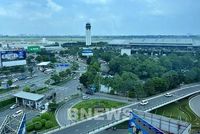Vietnam's aviation industry is on the brink of significant transformation following recent regulatory changes aimed at expanding the types of aircraft that can be imported into the country. On April 13, 2025, the Vietnamese government promulgated Decree No. 89/2025/NĐ-CP, which amends previous regulations to allow aircraft from a broader range of international aviation authorities.
This new decree is a pivotal shift from the earlier stipulations set by Decree No. 92/2016/NĐ-CP, which had limited the types of imported aircraft to those certified by the US Federal Aviation Administration (FAA) and the European Aviation Safety Agency (EASA), as well as the Civil Aviation Authority of Vietnam (CAAV). Now, aircraft from Brazil, Canada, Russia, the United Kingdom, and China can also be certified for import, which will enhance Vietnam's aviation capacity and operational flexibility.
According to the Ministry of Construction, which has merged with the Ministry of Transport, this regulatory update is crucial for allowing Vietnamese airlines to access a wider range of aircraft designed and manufactured globally. This move aims to alleviate some of the operational challenges faced by local airlines, particularly in light of the current shortage of operational aircraft.
As of December 20, 2024, the CAAV reported that Vietnam's fleet consisted of 249 aircraft, including 220 fixed-wing and 29 helicopters. This figure represents a decrease of 12 aircraft from the previous year, largely due to maintenance issues and the grounding of 33 aircraft for over 12 months. Many of these grounded planes were affected by a recall of engines from Pratt & Whitney, resulting in operational challenges that have driven up ticket prices.
Prime Minister Pham Minh Chinh has been proactive in addressing these challenges. On April 14, during a meeting with Mr. Ha Dong Phong, Chairman of the Commercial Aircraft Corporation of China (COMAC), he emphasized the need for cooperation in developing Vietnam's aviation industry and space exploration capabilities. Chinh's government is keen on establishing partnerships that would not only facilitate the acquisition of aircraft but also support local maintenance and repair operations.
Vietjet Air has already expressed interest in utilizing COMAC's ARJ21 aircraft for direct flights to Con Dao, with routes planned from both Hanoi and Ho Chi Minh City. This initiative marks a significant step in diversifying Vietnam's aviation offerings and enhancing connectivity across the country.
Simultaneously, Vietnam Airlines is exploring the integration of Embraer aircraft into its fleet. In March 2024, Deputy Chairman of the State Capital Management Committee at enterprises, Nguyen Ngoc Canh, met with representatives from Embraer to discuss potential collaborations. Canh highlighted that the new generation of Embraer commercial aircraft could provide viable solutions for Vietnamese airlines, particularly for short and medium-haul routes.
As the aviation sector grapples with post-pandemic recovery, the government's commitment to fostering a more inclusive regulatory environment is seen as a critical factor in revitalizing the industry. The Prime Minister's administration is dedicated to creating the best conditions for businesses, as evidenced by his recent directive to state-owned enterprises to lead in digital transformation and growth.
On April 15, 2025, Chinh chaired a conference aimed at supporting state-owned enterprises in their digital initiatives, further illustrating the government's approach to modernizing the aviation sector amid global challenges. The government anticipates that these changes will not only improve the operational capabilities of airlines but will also enhance international cooperation with traditional partners.
Looking ahead, Vietnam is set to inaugurate five component projects of the North-South Expressway on April 19, 2025, coinciding with the 50th anniversary of the South Liberation and national reunification Day. This infrastructure development is expected to complement the growth of the aviation sector by improving overall transportation networks across the country.
In summary, Vietnam's recent regulatory changes regarding aircraft imports and the proactive strategies being implemented by the government and airlines signal a promising future for the nation's aviation industry. With the potential for expanded aircraft options and enhanced international collaboration, Vietnam is poised to bolster its position in the global aviation market.





